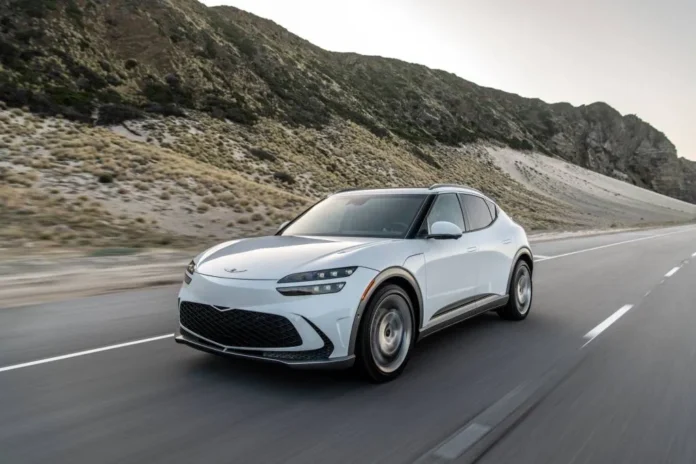States took on the mantle of combating climate change during the first Trump administration. Now they need to redouble the work during the second.
That’s the message that Caroline Spears, executive director of Climate Cabinet, has for state lawmakers following Trump’s victory on Tuesday.
As an advocacy organization that helps state and local leaders “run, win, and legislate on climate change,” Climate Cabinet supported more than 170 candidates in Tuesday’s election. As of midday Wednesday, when Spears spoke to Canary Media, she was feeling cautiously optimistic about the races her group had focused on: “About a third of them we won, about a third of them we lost, and about a third of them are still too close to call.”
Getting climate-committed candidates into state offices can make the difference between a state enacting or preserving climate policies and it blocking or rolling back such policies, she said. For example, the 2022 midterms saw Maryland, Massachusetts, Michigan, and Minnesota secure Democratic “trifectas” — control of the governor’s office and both houses of the state legislature — leading to significant climate legislation being passed and signed into law in those states.
States have “always been key to climate policy,” Spears said, and now, with a Trump administration expected to attempt to unravel the Biden administration’s climate policies and unleash fossil fuels, it’s “up to state leaders to hold the line.”
How states can keep the energy transition moving
State lawmakers and regulators have the ability to order local utilities to shut down or reduce emissions from fossil-fueled power plants and expand the share of electricity they generate from zero-carbon resources like wind, solar, geothermal, and nuclear power.
States can also require large polluters — like fossil-gas utilities — to reduce the amount of greenhouse gas they spew into the air and set emissions and energy-efficiency requirements for buildings. At present, states have the authority to adopt vehicle emissions standards that are more strict than those set by the federal government — although Trump sought to rescind that authority during his first term and may attempt to do so again.
States also play a key role in distributing funds from the federal Inflation Reduction Act and Infrastructure Investment and Jobs Act — at least while the full laws remain on the books.
During the first Trump administration, “we saw states really taking charge,” said Jeff Deyette, deputy director of clean energy at the Union of Concerned Scientists, an advocacy group. “I think that momentum has been maintained over the past eight years. This could be another boost to continue to push those state leaders … to protect what they have.”
There’s a lot to protect. The roster of states with aggressive decarbonization targets has expanded under the Biden administration: Colorado, Illinois, Maryland, Massachusetts, North Carolina, Oregon, Rhode Island, and Washington state all adopted strong emissions goals in 2021 or 2022.
All told, 25 states and Washington, D.C., have now instituted some form of target for achieving either economywide net-zero carbon emissions, 100 percent renewable or carbon-free electricity, or both. This chart, compiled in mid-2024, includes all of these states except Vermont, which in June 2024 passed a law mandating 100 percent renewable energy by 2035 for all utilities and by 2030 for its largest utility, Green Mountain Power.
How the 2024 election changed the state policy landscape
Clean energy and climate policies aren’t necessarily partisan issues, said Heather O’Neill, CEO of trade group Advanced Energy United. “We see the potential for broad agreement in states of all political stripes and persuasions,” as utilities grapple with rising electricity demand from data centers, factories, electric vehicles, and broader economic growth. “Advanced energy technologies are a low-cost solution to all of these challenges,” she said.
She cited the example of Texas, a red state that’s deployed more wind and utility-scale solar power than any other state and is set to pass California for having the most grid-connected batteries by year’s end. Those resources are “working to keep the grid reliable,” O’Neill said, as shown by the role that solar and batteries played in averting grid emergencies this summer.
But to date, Democratic control has been a prerequisite for passing aggressive climate or clean-energy legislation in almost every state that has done so. The exception is North Carolina, where the GOP-controlled legislature passed a law in 2021 mandating that Duke Energy, the state’s biggest utility, cut carbon emissions 70 percent below 2005 levels by 2030 and reach net-zero emissions by 2050.
Heading into the election, 17 states had Democratic trifectas and 23 states had Republican trifectas. No state appears to be on a path to form a new Democratic trifecta as a result of the election; rather, Democrats have lost full control in Michigan and might do the same in Minnesota.

Source link by Canary Media
Author Jeff St. John
#Trump #win #it039s #states #lead #climate #action







